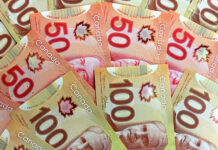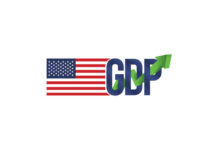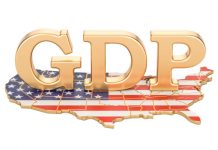Markets
In yesterday’s Sintra panel discussion with ECB Lagarde, Fed Powell, BoE Bailey and BoJ Ueda, the former three all reiterated the need to hike rates further as the economy, and in particular the labor market, withstands previous tightening rather well. Powell referred to the dot plot which pencils in two more hikes and did not want to exclude moving on consecutive meetings. The intraday yield rebound that this triggered didn’t last though. US Treasuries finished around the highs for the day, pushing yields between 3.4-6.5 bps lower. The German yield curve turned slightly less inverse with changes of -3 (30-y) to -5.6 bps (2-y). A negligible 0.1 ppt miss in the y/y Italian HICP yesterday accelerated a trend already in place. Returning to the discussion, Ueda was the odd one out. He said inflation expectations and wage-setting behavior have changed for the good but there needs to be greater certainty on the outlook for prices in 2024 before considering a tweak to policy. European and US stock markets parted ways with the former adding 0.92% (EuroStoxx 50) but the latter trading mixed in a -0.22% to +0.27% range. The dollar was better bid. It extended and, unlike yields, retained gains after Powell’s comments. EUR/USD tested but closed above 1.09. USD/JPY moved further north and is closing in on the 145 barrier. Sterling slid on reports of a potential temporary and costly nationalization of the UK’s biggest water supplier. EUR/GBP took out 0.86 to close at 0.8637.
Australian and Japanese retail sales beat expectations in Asian dealings this morning (cf. infra). China fixed its currency stronger than expected as the yuan yesterday continued to slide. USD/CNY this morning nevertheless trades at the highest level since November last year with some dollar strength at play as well. Core bonds trade weaker. US cash yields add a few bps.
The ECB’s symposium drew to a close yesterday. Attention shifts to the economic calendar, containing US jobless claims, European economic confidence and inflation readings of several European member states including Belgium, Spain and Germany. Because of its weight in the European index, the latter will be closely watched. Inflation (headline and core) should reaccelerate due to base effects following the introduction of a cheap transport ticket one year ago for three months. Even if it is statistical in nature, it keeps inflation even more elevated for the coming period. Quickening inflation normally wouldn’t come as a surprise but it should protect (European) yields’ downside nevertheless. The German 10-y yield is nearing support from the upward sloping trendline again. Against this background we look for the euro to be better able to withstand current dollar strength.
News and views
The 23 biggest US banks passed the yearly stress test conducted by the US Federal Reserve. In the stress scenario, banks need to show that they have big enough capital buffers to withstand an extreme economic scenario. This year’s scenario included the unemployment rate jumping to 10%, commercial real estate prices falling 40% and house prices tumbling 38% with the short-term interest rate falling back near 0.0%. The test estimated that US banks would lose up to $541 bn, but it still would leave them with enough required capital. According to the Vice-Fed Chair for supervision Michel Barr the stress test confirms that the banking systems remains strong and resilient.
The Australian Bureau of Statistics reported stronger than expected May retail sales. Sales rose 0.7% M/M vs a 0.1% rise expected. Sales were 4.2% higher y/y. “Retail turnover was supported by a rise in spending on food and eating out, combined with a boost in spending on discretionary goods. This latest rise reflected some resilience in spending with consumers taking advantage of larger than usual promotional activity and sales events for May.”, ABS said. The report is one of last inputs before next week’s RBA policy decision. For now markets still only see about 20% chance of a new additional rate hike with further steps expected later this year. The Aussie dollar this morning holds near recent lows near the AUD/USD 0.66 big figure. May retail sales in Japan this morning also printed higher than expected at 1.3% M/M and 5.7% Y/Y. Data show resilience in consumer spending in Japan as well, but at least for now the BoJ doesn’t hint at a change in policy yet. The yen remains in the defensive this morning with USD/JPY holding the short-term top in the 144.6 area.











